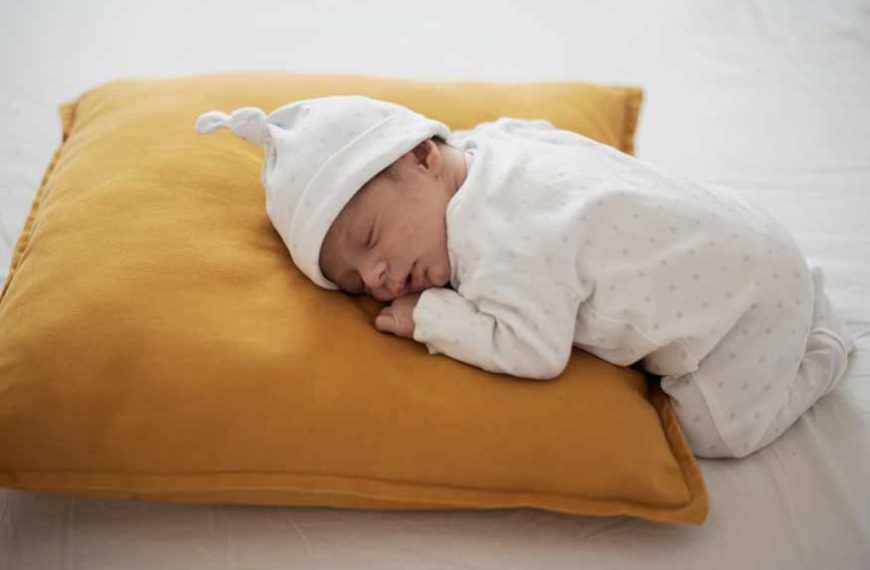The safety of infants is a paramount concern for all parents, especially during sleep times. Among various infant care products, the baby nursing pillow has gained popularity for its multifunctional use. However, it’s essential to understand the proper usage of such pillows, particularly when it comes to babies sleeping on a nursing pillow. This article will explore the nature of nursing pillows, their safe usage, and guidelines to follow for ensuring the utmost safety for your little one.
What is a Nursing Pillow?
A nursing pillow, essentially a specialized pillow, is designed to aid in breastfeeding and bottle-feeding. Its ergonomic design supports the baby’s head and neck while relieving pressure on the mother’s arms and back. Typically crescent-shaped, these pillows are tailored to fit around the mother’s waist, providing a comfortable and supportive platform for the baby during feeding.
The Versatility of Nursing Pillows
Apart from aiding in feeding, nursing pillows are often repurposed for various other activities, like providing support when a baby is learning to sit. Parents also tend to use these pillows as a soft resting place for their infants. However, it’s crucial to differentiate between the intended use of a product and other ancillary uses it might be adapted for.
Risks Associated with Baby Sleeping on Nursing Pillow
While nursing pillows offer convenience, using them for purposes like baby sleeping can pose significant risks. The primary concern is the potential for suffocation or Sudden Infant Death Syndrome (SIDS). These pillows are not designed for unsupervised sleep, as they can cause the baby’s head to tilt forward, obstructing the airway, or the baby might roll over into a position that could hinder breathing.
Guidelines for Safe Usage of Nursing Pillows
- Stick to the Intended Purpose
- Supervision is Key
- Adhere to Sleep Safety Norms
- Know When to Transition
Understand that a nursing pillow is primarily for feeding support. Avoid using it as a sleeping aid for your baby.
When using a nursing pillow, always ensure continuous supervision. Never leave your baby unattended on the pillow.
For sleeping, adhere strictly to safe sleep guidelines: placing the baby on their back, on a firm, flat surface devoid of loose bedding or soft objects.
As your baby grows, you should know when to stop using a nursing pillow for feeding. Typically, this is when the baby can sit unaided and no longer needs support during feeding.
How to Use Nursing Pillow Safely
To use a nursing pillow safely, always sit in an upright position and wrap the pillow securely around your waist. Place the baby on the pillow in a way that their head is at breast level for feeding. Always remove the pillow after feeding and transfer the baby to a safe sleeping environment.
When to Stop Using a Nursing Pillow
As infants develop, their reliance on a nursing pillow diminishes. This usually occurs around the time they can sit independently, around 6 to 9 months. At this stage, the nursing pillow’s role becomes less critical, and parents should transition away from its use to encourage natural posture development in their child.
The Importance of Educating Parents on Nursing Pillow Safety
Education plays a critical role in ensuring the safety of infants when using baby nursing pillows. It’s not just about knowing what a nursing pillow is, but also understanding its limitations and risks. Healthcare providers, including pediatricians and lactation consultants, have a responsibility to educate new parents on the correct usage of these pillows. This education should cover how to use a nursing pillow during feedings and emphasize the dangers of using it as a sleep aid.
Common Misconceptions About Nursing Pillows
One common misconception is that if a baby falls asleep on a nursing pillow, it’s safe to leave them unattended. This belief can lead to tragic consequences, as the soft and elevated surface of the pillow can pose a suffocation risk. Another misconception is that all baby products available in the market are safe for all purposes, including sleep. However, products like nursing pillows are designed with a specific use in mind, and deviating from this can be dangerous.
Monitoring and Intervention
Vigilant monitoring is essential when using a nursing pillow. If a baby falls asleep during feeding, parents should gently move them to a safe sleep environment. This practice reinforces the importance of the separate sleeping surface and reduces the risk of any sleep-related accidents.
EuroKids’ Commitment to Infant Safety
At EuroKids, we take pride in our commitment to providing safe and nurturing environments for children. We understand the challenges new parents face and offer resources and support to help navigate the complexities of infant care. Our programs and advice are designed to prioritize the safety and health of every child, reinforcing the importance of using products like nursing pillows correctly and safely.
Transitioning Away from Nursing Pillows
Understanding when to stop using a nursing pillow is as crucial as knowing how to use one. As babies grow and gain muscle strength, they require less support during feeding. This developmental milestone is a signal for parents to gradually phase out the use of the nursing pillow. Doing so encourages independence and helps in the natural development of the baby’s posture and motor skills.
In conclusion, while baby nursing pillows are an excellent aid for feeding, they should not be used as a sleeping surface for babies. Understanding how to use a nursing pillow correctly is crucial for the safety and well-being of your child. By adhering to these guidelines, parents can ensure that their use of a nursing pillow is both beneficial and safe.
At EuroKids, we are dedicated to providing a safe and nurturing environment for every child. We understand the nuances of infant care and always strive to offer guidance that promotes the health and safety of your precious little ones. Trust us to be a part of your journey in nurturing a happy, healthy, and safe future for your child.














